Breast Cancer Predictions Using Machine Learning Algorithms †
Abstract
1. Introduction
2. Literature Review
3. Methodology
- Logistic Regression: This is a generalized linear model. This is also simple and interpretable. This is also suitable for binary classification, when you need a quick baseline for binary classification like a diagnosis column.
- Naïve Bayes: It is fast and efficient for high dimensional datasets and it also works well with categorical data, when features are independent in it.
- KNN Nearest Neighbors: It is also simple and non-parametric and makes no data distribution. Used for small datasets.
3.1. Description of Dataset
3.2. Proposed Machine Learning Model
4. Results
- Prior to cleansing the images of all noise, the segmentation process began. The images are then re-sized and unneeded noise is erased. Following this, the modified images are sent to the U-Net segmentor.
- The output from the segmentor undergoes classification by the Convolution Neural Network (CNN).
5. Implementation
5.1. Description of Dataset
5.2. Accuracy with Machine Learning Models
6. Conclusions
Author Contributions
Funding
Institutional Review Board Statement
Informed Consent Statement
Data Availability Statement
Conflicts of Interest
References
- Li, Y. Performance evaluation of machine learning methods for breast cancer prediction. Appl. Comput. Math. 2018, 7, 212. [Google Scholar] [CrossRef]
- Floyd, C.E.; Lo, J.Y.; Yun, A.J.; Sullivan, D.C.; Kornguth, P.J. Prediction of breast cancer malignancy using an artificial neural network. Cancer 1994, 74, 2944–2948. [Google Scholar] [CrossRef]
- Wang, H. Breast Cancer Prediction Using Data Mining Method. 2015. Available online: https://www.researchgate.net/publication/319688741 (accessed on 1 January 2025).
- Daemen, A.; Griffith, O.L.; Heiser, L.M.; Wang, N.J.; Enache, O.M.; Sanborn, Z.; Pepin, F.; Durinck, S.; Korkola, J.E.; Griffith, M.; et al. Modeling precision treatment of breast cancer. Genome Biol. 2013, 14, R110. [Google Scholar] [CrossRef]
- Fatima, N.; Liu, L.; Hong, S.; Ahmed, H. Prediction of breast cancer, comparative review of machine learning techniques, and their analysis. IEEE Access 2020, 8, 150360–150376. [Google Scholar] [CrossRef]
- Sivapriya, J.; Kumar, A.; Sai, S.S.; Sriram, S. Breast cancer prediction using machine learning. Int. J. Recent Technol. Eng. (IJRTE) 2019, 8, 4879–4881. [Google Scholar]
- Mavaddat, N.; Michailidou, K.; Dennis, J.; Lush, M.; Fachal, L.; Lee, A.; Tyrer, J.P.; Chen, T.H.; Wang, Q.; Bolla, M.K.; et al. Polygenic risk scores for prediction of breast cancer and breast cancer subtypes. Am. J. Hum. Genet. 2019, 104, 21–34. [Google Scholar] [CrossRef]
- Botlagunta, M.; Botlagunta, M.D.; Myneni, M.B.; Lakshmi, D.; Nayyar, A.; Gullapalli, J.S.; Shah, M.A. Classification and diagnostic prediction of breast cancer metastasis on clinical data using machine learning algorithms. Sci. Rep. 2023, 13, 485. [Google Scholar] [CrossRef]
- Khan, F.; Khan, M.A.; Abbas, S.; Athar, A.; Siddiqui, S.Y.; Khan, A.H.; Saeed, M.A.; Hussain, M. Cloud-Based Breast Cancer Prediction Empowered with Soft Computing Approaches. J. Healthc. Eng. 2020, 2020, 8017496. [Google Scholar] [CrossRef]
- Sakri, S.B.; Abdul Rashid, N.B.; Muhammad Zain, Z. Particle swarm optimization feature selection for breast cancer recurrence prediction. IEEE Access 2018, 6, 29637–29647. [Google Scholar] [CrossRef]
- Baselga, J.; Norton, L. Focus on breast cancer. Cancer Cell 2002, 1, 319–322. [Google Scholar] [CrossRef]
- Rawal, R. Breast Cancer Prediction Using Machine Learning. 2020. Available online: http://www.jetir.org (accessed on 10 February 2025).
- Benson, J.R.; Jatoi, I.; Keisch, M.; Esteva, F.J.; Makris, A.; Jordan, V.C. Early breast cancer. Lancet 2009, 373, 1463–1479. [Google Scholar] [CrossRef]
- Diwaker, C.; Tomar, P.; Solanki, A.; Nayyar, A.; Jhanjhi, N.Z.; Abdullah, A.; Supramaniam, M. A new model for predicting component-based software reliability using soft computing. IEEE Access 2019, 7, 147191–147203. [Google Scholar] [CrossRef]
- Kok, S.H.; Abdullah, A.; Jhanjhi, N.Z.; Supramaniam, M. A review of intrusion detection system using machine learning approach. Int. J. Eng. Res. Technol. 2019, 12, 8–15. [Google Scholar]
- Ahmed, S.; Hossain, M.A.; Bhuiyan, M.M.I.; Ray, S.K. A comparative study of machine learning algorithms to predict road accident severity. In Proceedings of the 2021 20th International Conference on Ubiquitous Computing and Communications (IUCC/CIT/DSCI/SmartCNS), London, UK, 20–22 December 2021; pp. 390–397. [Google Scholar] [CrossRef]
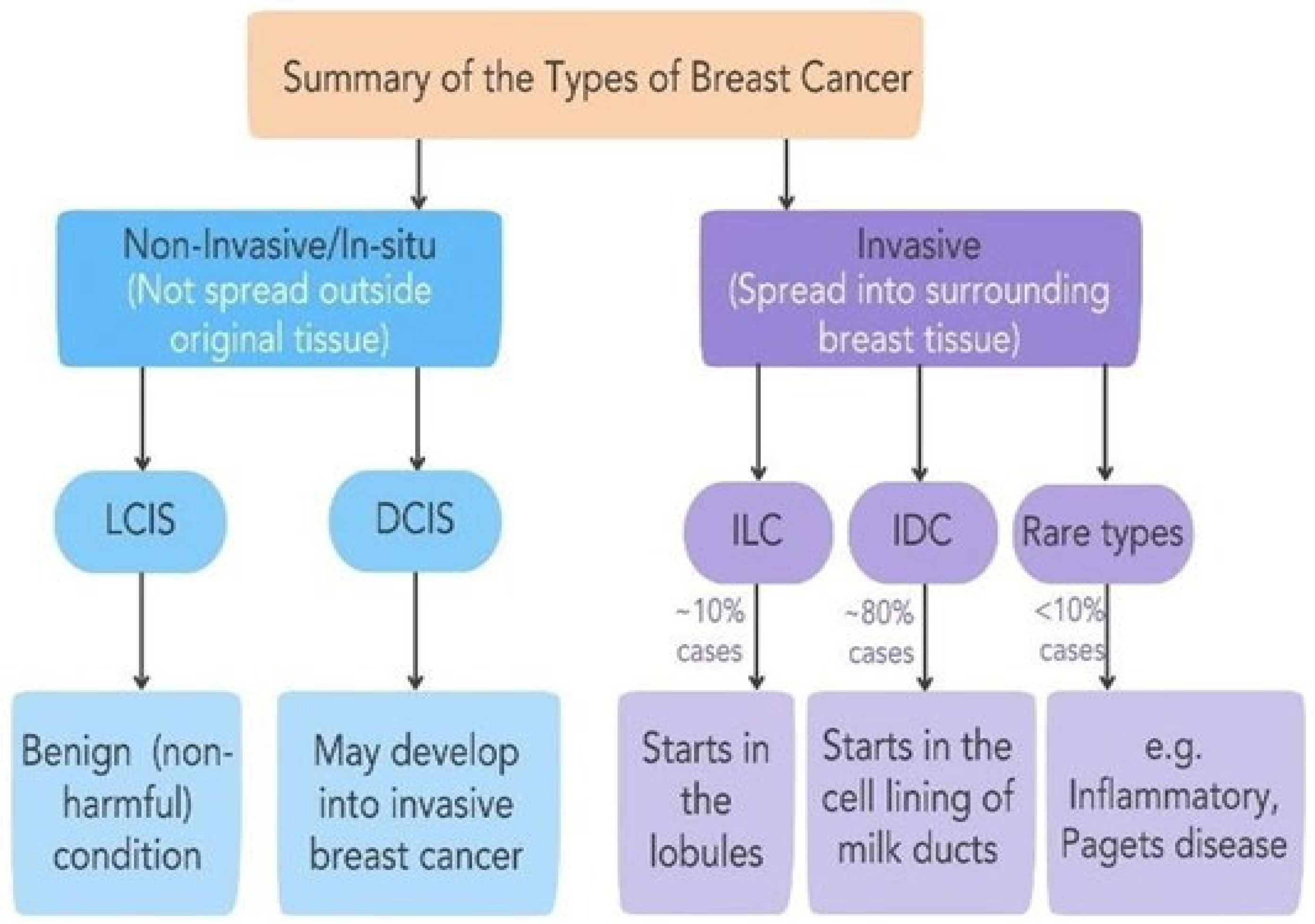

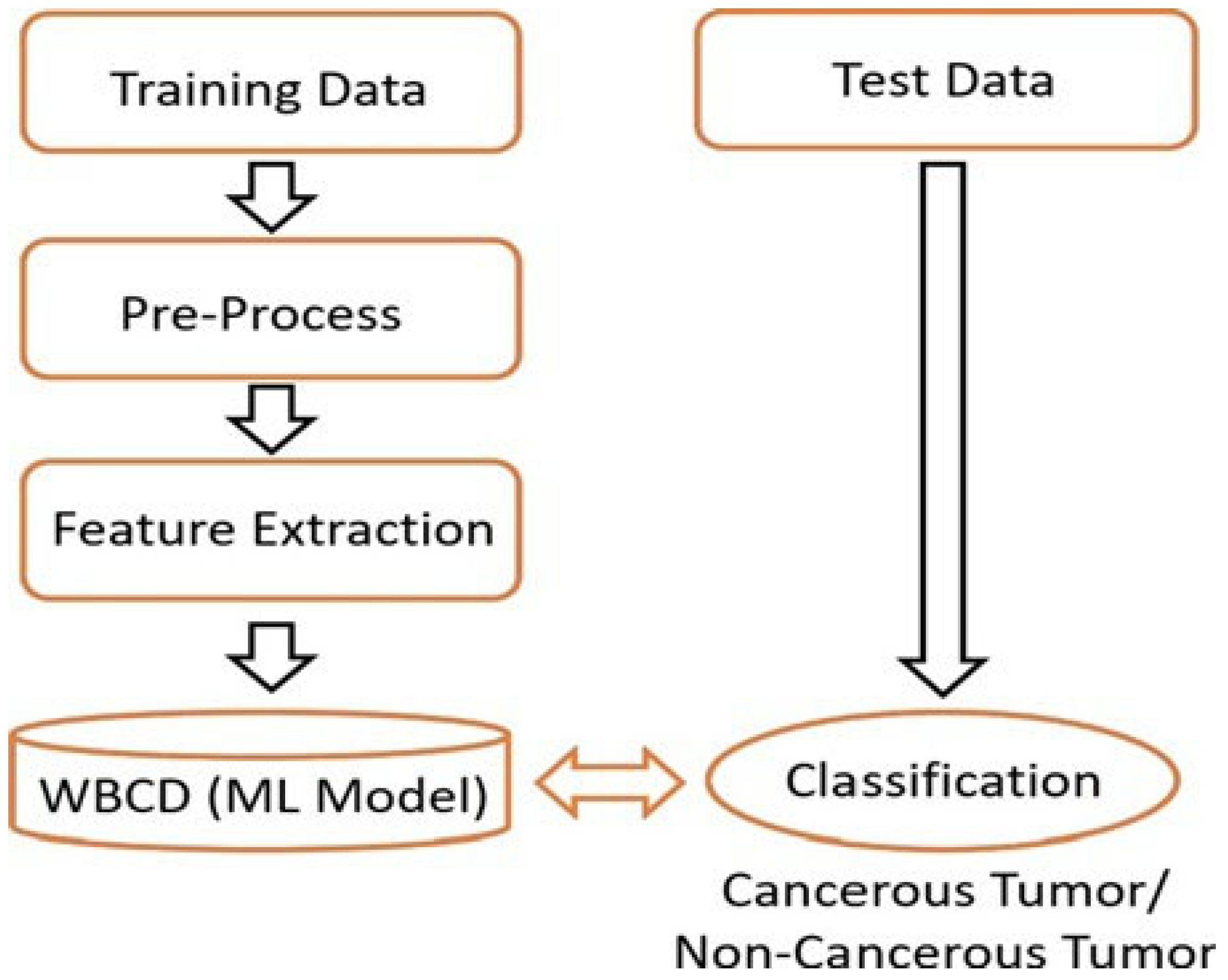
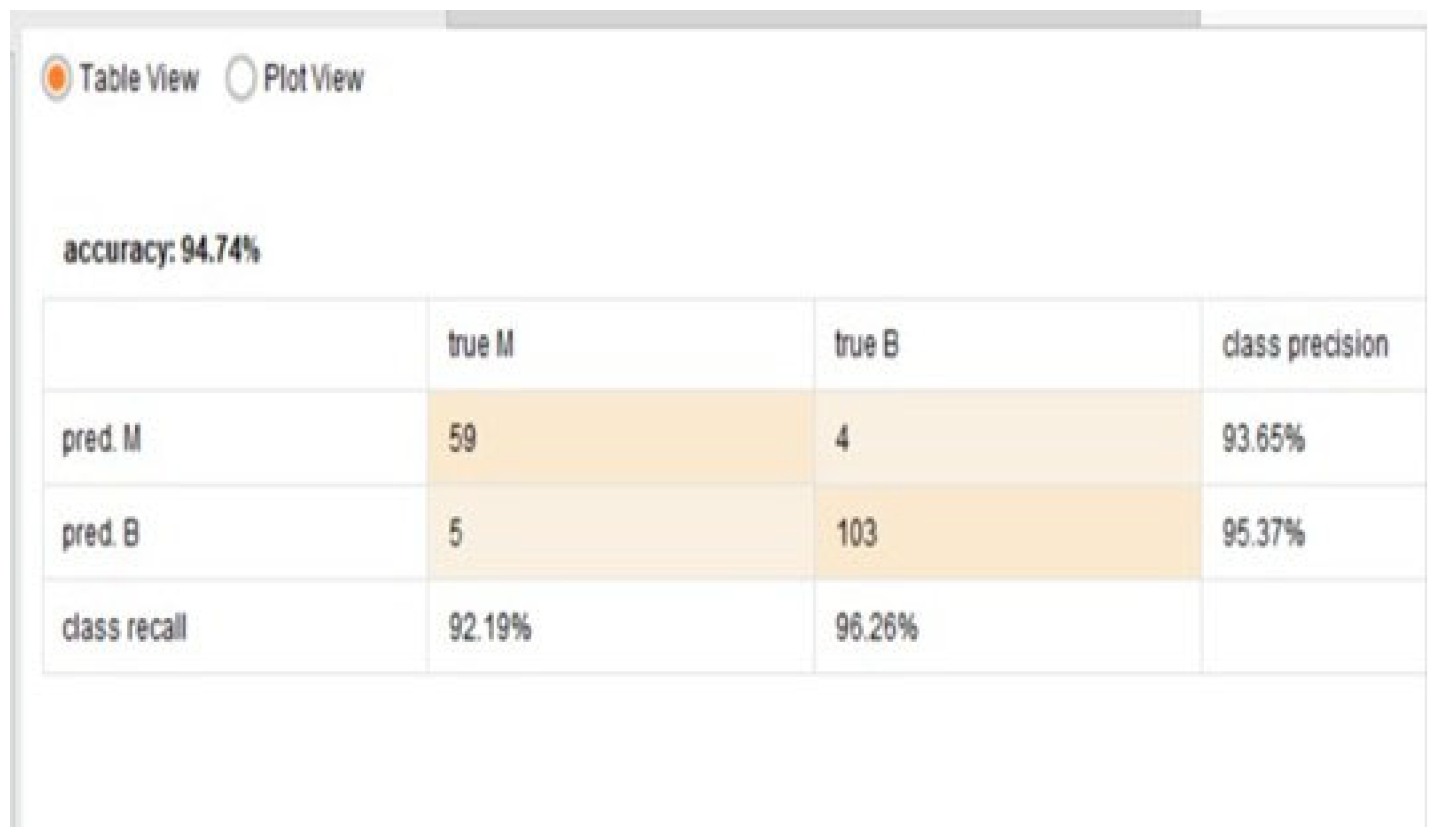
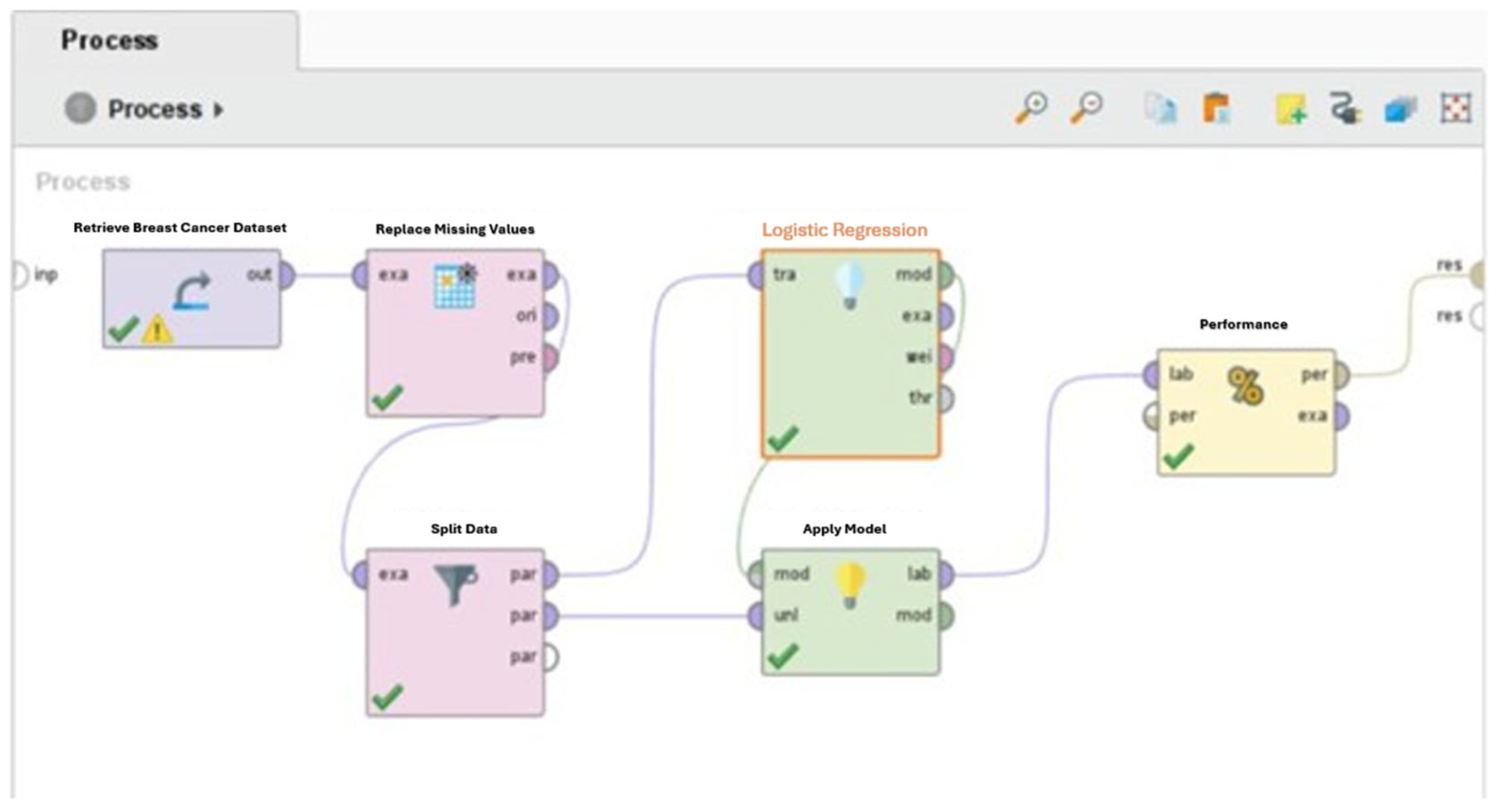
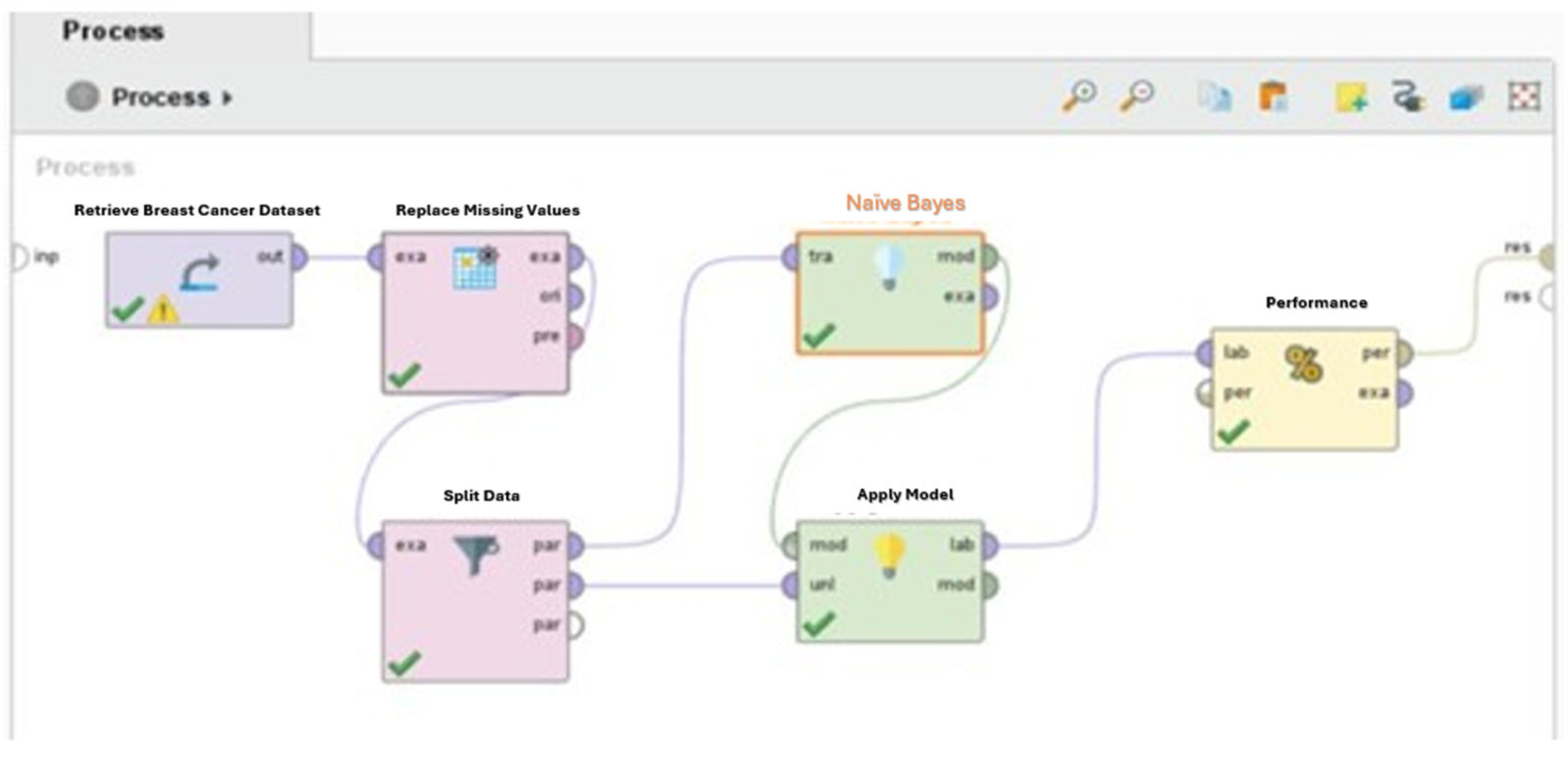
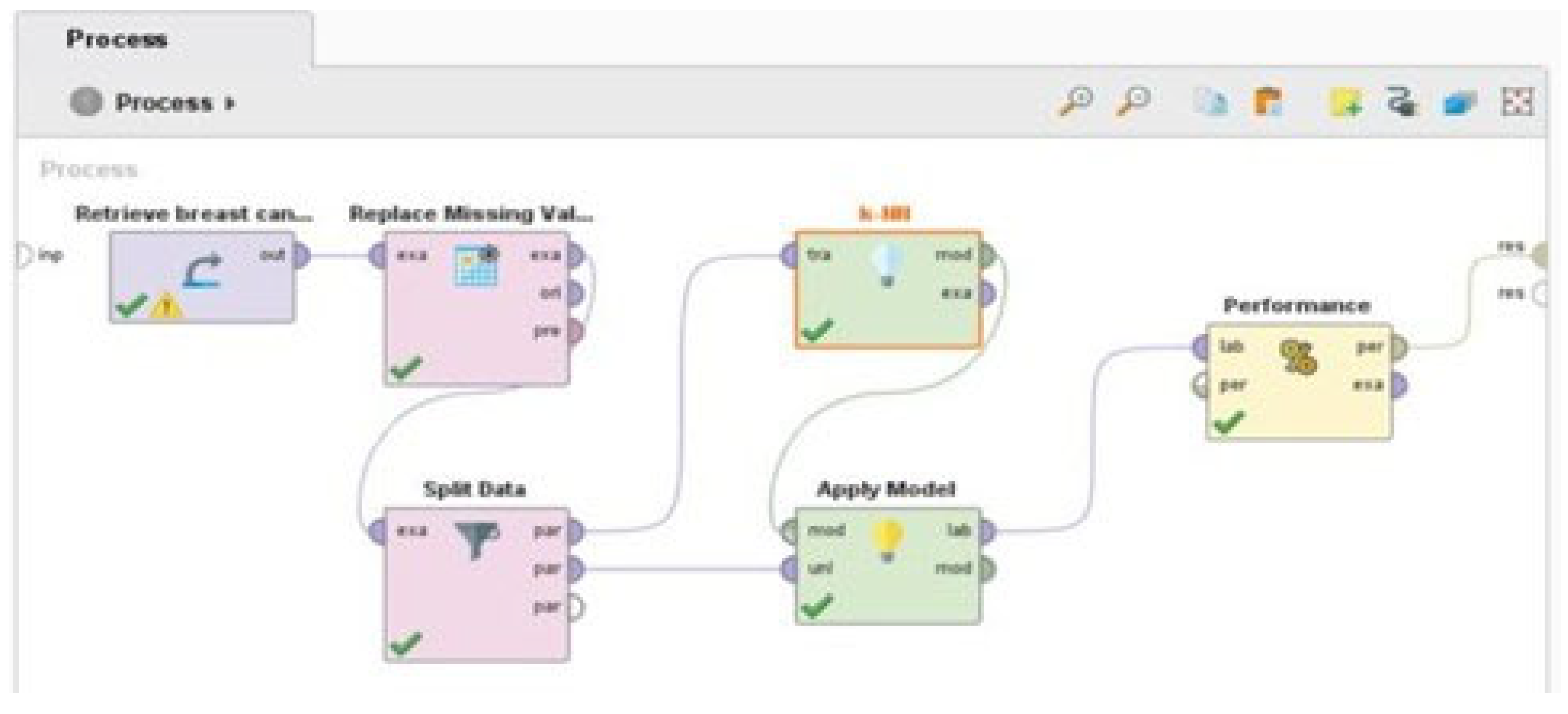

| Sr. | Attributes | Description |
|---|---|---|
| 1 | Year | Years from 2019 to 2024 |
| 2 | Age | Age gaps of women |
| 3 | Menopause | Feature for predicting breast size. |
| 4 | Tumor Size | Used for predicting breast cancer |
| 5 | Inv-Nodes | Number of affected people |
| 6 | Breast | Population data (2022) |
| 7 | History | Past cases of breast cancer |
| 8 | Diagnosis Result | Indicates weather cancer is benign or malignant |
| Algorithms | Accuracy | Precision | Recall |
|---|---|---|---|
| KNN | 91.81% | 91.67% | 85.94% |
| Naïve Bayes | 94.7% | 93.65% | 92.19% |
| Logistic Regression | 37.43% | 37.43% | 38.9% |
Disclaimer/Publisher’s Note: The statements, opinions and data contained in all publications are solely those of the individual author(s) and contributor(s) and not of MDPI and/or the editor(s). MDPI and/or the editor(s) disclaim responsibility for any injury to people or property resulting from any ideas, methods, instructions or products referred to in the content. |
© 2025 by the authors. Licensee MDPI, Basel, Switzerland. This article is an open access article distributed under the terms and conditions of the Creative Commons Attribution (CC BY) license (https://creativecommons.org/licenses/by/4.0/).
Share and Cite
Mehak, A.; Ali, T.M.; Nawaz, A.; Parwati, L.S. Breast Cancer Predictions Using Machine Learning Algorithms. Eng. Proc. 2025, 107, 129. https://doi.org/10.3390/engproc2025107129
Mehak A, Ali TM, Nawaz A, Parwati LS. Breast Cancer Predictions Using Machine Learning Algorithms. Engineering Proceedings. 2025; 107(1):129. https://doi.org/10.3390/engproc2025107129
Chicago/Turabian StyleMehak, Adan, Tahir Muhammad Ali, Ali Nawaz, and Lusiana Sani Parwati. 2025. "Breast Cancer Predictions Using Machine Learning Algorithms" Engineering Proceedings 107, no. 1: 129. https://doi.org/10.3390/engproc2025107129
APA StyleMehak, A., Ali, T. M., Nawaz, A., & Parwati, L. S. (2025). Breast Cancer Predictions Using Machine Learning Algorithms. Engineering Proceedings, 107(1), 129. https://doi.org/10.3390/engproc2025107129






